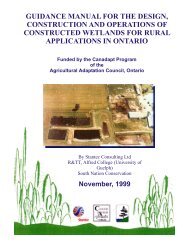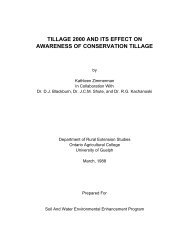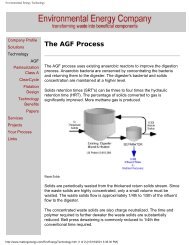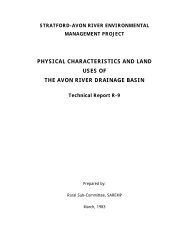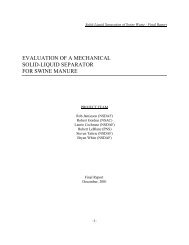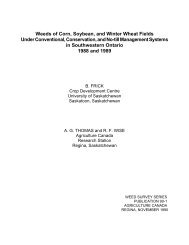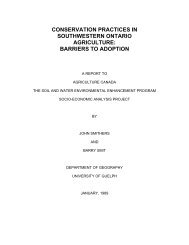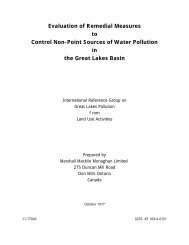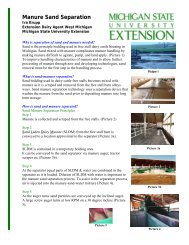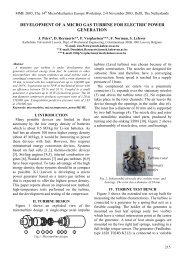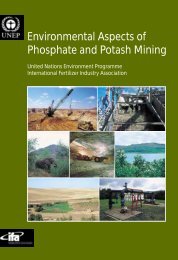The Applications of Chemical Analyses of Sediments and Soils in ...
The Applications of Chemical Analyses of Sediments and Soils in ...
The Applications of Chemical Analyses of Sediments and Soils in ...
Create successful ePaper yourself
Turn your PDF publications into a flip-book with our unique Google optimized e-Paper software.
operation. Wastewater is a major source <strong>of</strong> heavy metal contam<strong>in</strong>ation (Helz et al,1975). Rapid decrease <strong>in</strong> concentration <strong>of</strong> Zn, Cu, Pb, <strong>and</strong> Cd below the outfall <strong>in</strong>toBlack River, Maryl<strong>and</strong> was attributed to processes other than dilution, such asadsorption, precipitation, colloidal flocculation or biological uptake scaveng<strong>in</strong>g themetals from the water <strong>and</strong> deposit<strong>in</strong>g them <strong>in</strong> the sediments. Intense algae bloomswere noted with day time pH <strong>of</strong>ten above 9.0 compared with average effluent pH <strong>of</strong> 6.9lead<strong>in</strong>g to rapid deposition <strong>of</strong> trace metal hydroxides, carbonates or phosphates, <strong>and</strong>possibly <strong>in</strong>creased sorption on organic <strong>and</strong> <strong>in</strong>organic particles.Algae have also been found to concentrate heavy metals <strong>and</strong> as they die <strong>and</strong>s<strong>in</strong>k carry the heavy metals <strong>in</strong>to the sediments (Mart<strong>in</strong> <strong>and</strong> Knauer, 1973). Cadmiumappears to remobilize from the sediment possibly by cation exchange, or ag<strong>in</strong>g <strong>and</strong>decay <strong>of</strong> organic material, or solubilization as aqueous complexes (Helz et al, 1975).Acidity <strong>and</strong> colloid content, both <strong>in</strong>organic (clays) <strong>and</strong> organic (humic material),are important factors govern<strong>in</strong>g metal solubility, exchange <strong>and</strong> mobility.Total soluble metals <strong>in</strong> soil (<strong>and</strong> sediment) are made up <strong>of</strong> simple ions,hydrolysis species, complexes <strong>and</strong> chelated species (L<strong>in</strong>dsay, 1975). For metals withmore than one valence state, solubility <strong>and</strong> m<strong>in</strong>eral transformations are affected byredox state. Measurement <strong>of</strong> ion activities can be useful.Initial contact <strong>of</strong> water soluble metals with soil or sediment, particularly underbasic conditions, normally results <strong>in</strong> precipitation, first highly amorphous with large7



